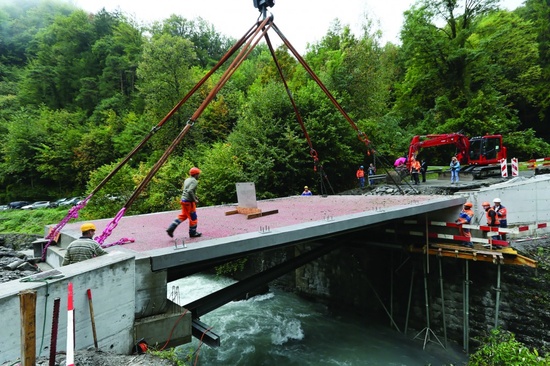Composite Advantage in Dayton, Ohio, has provided FRP bridge decks for seven pedestrian bridges in the past four years. Scott Reeve, president of the company, is upbeat about the outlook for composites in the infrastructure segment. We’re getting to the point where engineers, designers and procurement are letting us go head-to-head against concrete, he says. In the past, we were either excluded because they only considered traditional options or we had to do a lot of work to be a special demo case.
However, Reeve admits that progress is slow. I tell my employees, It took 30 years for steel to replace wood in bridges. It will take longer than we want for composites to replace concrete, he says. You have to keep working at it.
One way that Composite Advantage has made inroads in infrastructure is by providing products that help solve construction challenges and highlight the advantages of composites. That’s the case for the two bridge projects presented here: One required accelerated construction, while the other was a highly-engineered bridge. Both utilized prefabricated FRP bridge decks.
The decks were manufactured using the company’s FiberSPAN molded sandwich construction, which employs fiberglass top and bottom skins and closely-spaced internal webs that function like a series of I-beams. The fibers in the webs are oriented at ± 45° angles and infused with resin to form very strong, stiff shear webs for the sandwich cross-section. The closely-spaced webs provide good crushing resistance to concentrated loads, and there is no local skin deflection since the skins are well supported by the webs.


